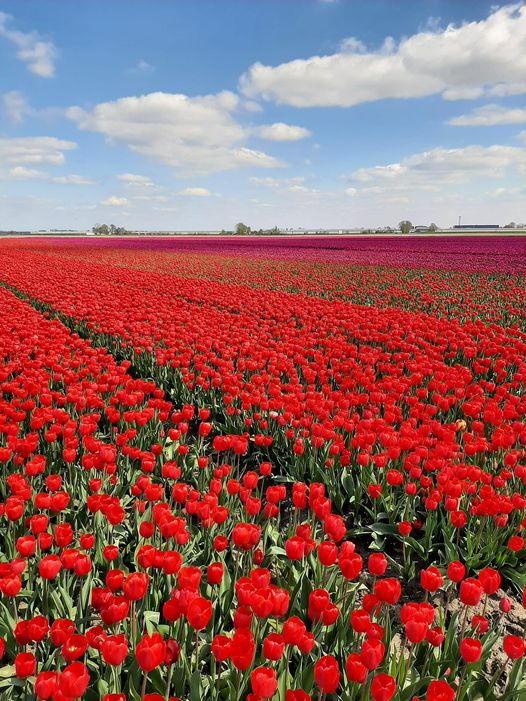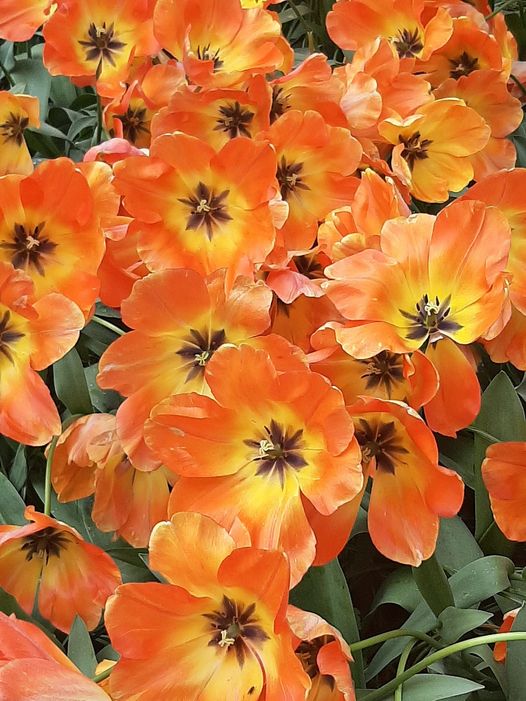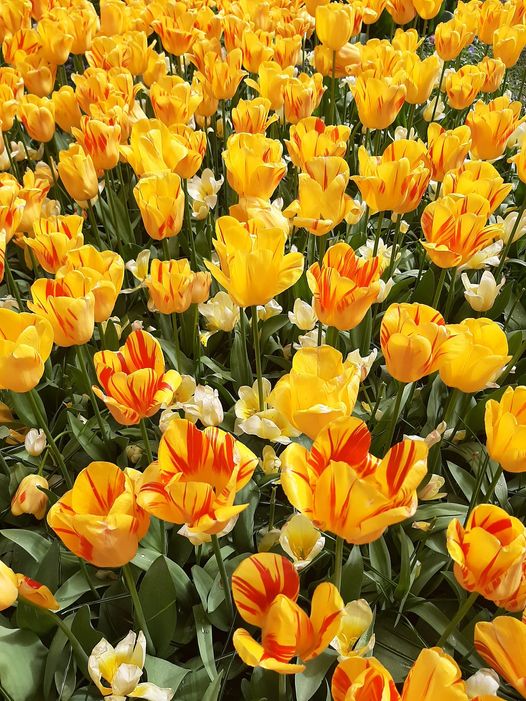 The landscape of the Netherlands is subtle, low-key. Flat. Unremarkable. It’s lovely in its own underwhelming way, though, with pale gray skies, a few delicate spring leaves on the trees, daisies and buttercups in the grass. A gentle, pastoral landscape of pastels and wide horizons.
The landscape of the Netherlands is subtle, low-key. Flat. Unremarkable. It’s lovely in its own underwhelming way, though, with pale gray skies, a few delicate spring leaves on the trees, daisies and buttercups in the grass. A gentle, pastoral landscape of pastels and wide horizons.
And then bam! A sudden blood-red slash across the earth. You’ve come to the justly world-famous tulip fields.
For about three weeks every spring, the quiet Dutch landscape goes crazy, flat-out van Gogh insane with color. Stripes of gold, magenta, lemon, orange lined up next to each other. Swathes of every shade of red you can think of: scarlet, crimson, garnet, and then a strip of baby pink, edged with a stripe of midnight purple.
The furrowed rows of tulips extend to the horizon, straight as if drawn with a ruler. It’s impossible to describe them without jumbling a hopeless mix of metaphors: they’re a child’s crayon box, a market stall of bright tropical fruits, a stained glass window of intense color shattered over the land.
It’s impossible to describe them without jumbling a hopeless mix of metaphors: they’re a child’s crayon box, a market stall of bright tropical fruits, a stained glass window of intense color shattered over the land.
Dutch weather is famously changeable: sun, rain, sun, wind, sleet, rain, sun…the cliché about waiting five minutes if you don’t like the weather is almost literally true here. Under clouds, the flower colors are somber and muted. Then the sun looks out and the tulips switch on like rows of Christmas lights.
 It’s odd to think of such beauty as a crop like wheat or potatoes. But these are not gardens, they’re farm fields. The product the growers are aiming for is bulbs, not blooms. Already the farmers are driving through the fields, the slow tractors following the lines of color, methodically decapitating every tulip.
It’s odd to think of such beauty as a crop like wheat or potatoes. But these are not gardens, they’re farm fields. The product the growers are aiming for is bulbs, not blooms. Already the farmers are driving through the fields, the slow tractors following the lines of color, methodically decapitating every tulip.
It seems like vandalism, but of course it makes sense: there’s very little market for the short-lived cut flowers, all the money is in the bulbs. Without the energy-sucking blossom, the leaves will photosynthesize with all their nutrition feeding the bulbs that will be harvested for sale in the summer. The petals fall in heaps of fading colors as the tractor chugs o n.
n.
In a few months, there will be dusty piles of dry, oniony-looking bulbs in the flower markets of the world. This section of the Netherlands grows a billion tulip bulbs each year. It’s a crop you can’t eat, feed to livestock, turn into cloth, or put to any useful purpose. A harvest of sheer beauty.







So thought provoking! And the pictures! Well, a picture is worth a thousand words – or more – if you can’t find the words! BRAVO!